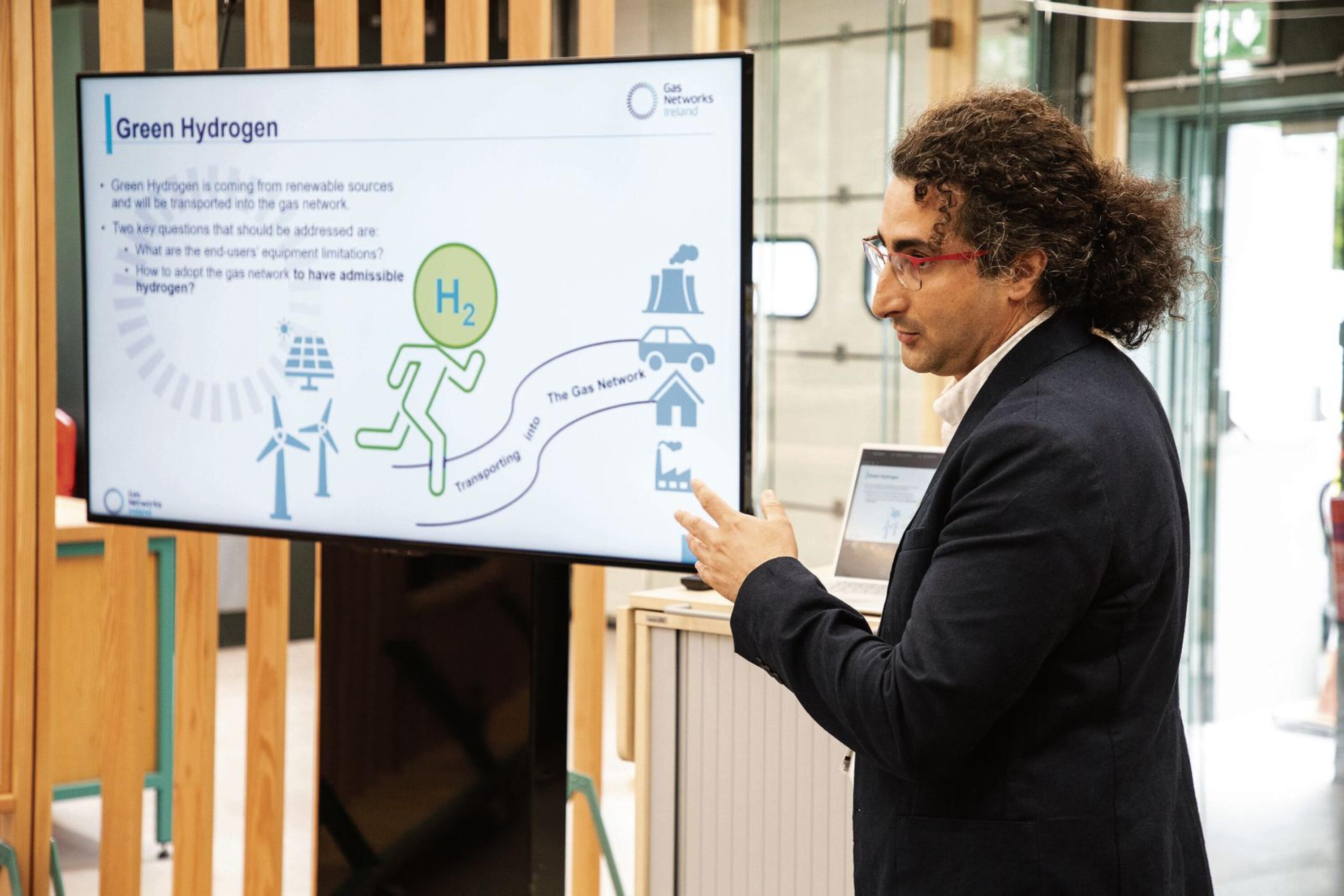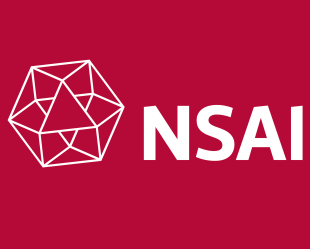Accurate energy metering is essential for the balancing of supply and demand, improving billing accuracy, and supporting the integration of renewable energy sources, writes NSAI’s Ali Ekhtiari.
The continuous unbroken supply of energy from clean sources is important to today’s economy and environment.
Electricity and gas systems are becoming more integrated to increase the share of renewable power in the energy systems. Among known green alternatives for primary energy, renewable gases such as green hydrogen and biomethane are becoming a progressively significant clean fuel in future energy systems.
Accurate measurement of the energy value of gas flow rates is crucial in the supply chain process, from the production points to the end-users.
In Ireland, NSAI’s Legal Metrology Service has actively engaged with Gas Networks Ireland (GNI) to ensure that gas meters used in the national grid are compliant with evolving standards, particularly in the context of renewable gas integration.
This collaboration ensures that metering infrastructure is not only accurate but also future-proofed for the inclusion of hydrogen and biomethane in the gas mix.
Revision of existing standards, establishment of new standards and technical specifications facilitate the energy system to ensure that the current existing gas metering and proving systems are capable and reliable enough for all stakeholders of an energy system, including suppliers, gas and power operators, industries, commercial and residential end-users.
By leveraging advanced metering infrastructure, integrated energy systems can achieve greater efficiency, sustainability, and resilience, aligning with national and international climate targets
Ali Ekhtiari Standardisation Expert - Hydrogen
Metering Systems in an Integrated Energy Systems
Adding more new interconnections, such as electrolysers and biomethane plants into the combined gas and power systems, the reliability and accuracy of metering systems as well as proving systems (to calibrate meters) is becoming more important [1].
These systems help optimise energy distribution, reduce losses, and increase efficiency by providing precise measurements on gas production and gas transportation to the large metered end-users such as power plants and other customers such as commercial and residential segments. Accurate metering is essential for the balancing of supply and demand, improving billing accuracy, and supporting the integration of renewable energy sources. In gas systems, measuring the flow rate in both mass and volumetric terms is vital.
In Ireland, it is targeted to fully decarbonise the energy systems by 2050. To reach this net zero carbon target, it is necessary to increase the share of renewable electricity by 80% by 2030 [2].

Pictured: Dr Ali Ekhtiari, presenting hydrogen initiatives at th Network Innovation Centre
Increasing the share of biomethane through the gas network also using hydrogen blends through the Irish energy system is essential for decarbonising the gas system.
Introducing new types of gases into the gas system required a comprehensive review of existing metering systems to investigate whether they are capable of measuring the energy density and mass or volume flow rate of renewable gases accurately.
The importance of metering systems is further highlighted in the context of renewable heat obligations, as it is considered by the Irish government. These obligations aim to increase the use of renewable energy in heating, reducing reliance on fossil fuels and lowering greenhouse gas emissions. Accurate metering supports these goals by ensuring that the energy supplied meets the required standards and contributes to overall energy security.
By leveraging advanced metering infrastructure, integrated energy systems can achieve greater efficiency, sustainability, and resilience, aligning with national and international climate targets [3].
Standards for Gas Metering
The evolving landscape of energy systems necessitates updated standards for gas metering to ensure accuracy, and reliability. The proposal for a Directive amending Directive 2014/32/EU addresses this need by incorporating new measuring instruments essential for achieving the European Green Deal’s objectives [4]. This targeted technical amendment expands the scope of the Measuring Instruments Directive (MID), originally established by Directive 2004/22/EC, to include electric vehicle supply equipment, compressed gas dispensers, and thermal energy meters.
Additionally, it emphasises the importance of digitalisation and the use of renewable gases, such as hydrogen, in modern gas metering systems. Complementing this directive, the CEN (European Standardisation Organisation) Technical Committee CEN/TC 234 "Gas infrastructure" has introduced a revised prEN 1776:2024-08, see Table 1, which includes provisions for measuring hydrogen and its blends, reflecting the growing diversity of gas types. This revision is currently open for public inquiry, inviting stakeholders to contribute to the development of robust and comprehensive standards for gas infrastructure [5]. EN 16726, see Table 1, addresses minimum requirements of gas energy density and identifying different gas types (media) for natural gas, pure hydrogen, hydrogen blends and biomethane.
| Standard | Stage of Progress | Title of Standard |
|---|---|---|
| EN 1776 | Public review enquiry | Gas Measuring - H2 and blends inclusion |
| EN 16726 | Public review enquiry | Gas Quality |
References
- Ekhtiari, D. Flynn, E. Syron, Investigation of the multi-point injection of green hydrogen from curtailed renewable power into a gas network, Energies 13 (22) (2020) 6047.
- Department of the Environment, Communications, Climate action plan 2025 (2025).
- Department of the Environment, Communications, Design of the renewable heat obligation - public consultation (2025).
- Union, Directive of the european parliament and of the council amending directive (eu) 2018/2001 (2025).
- C. for Standardisation, Gas infrastructure - gas measuring systems - functional requirements (2025).
[Disclaimer: All reasonable effort was made to ensure that the information on this page was correct at the time of publication. Any views or opinions expressed on this page are not necessarily those of NSAI. NSAI accepts no responsibility or liability howsoever arising from the contents of this publication or any errors, inaccuracies, or omissions in the contents of the information provided therein.]



